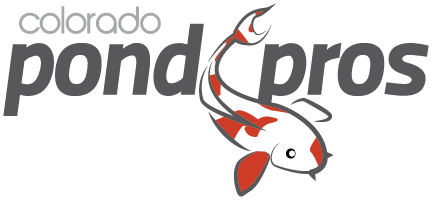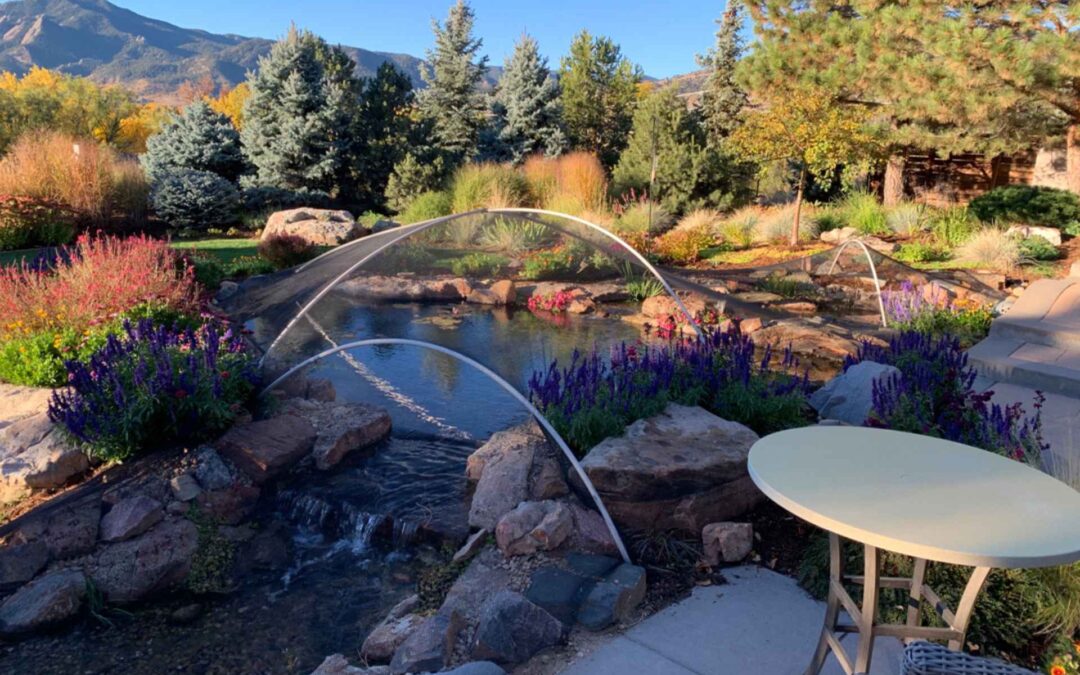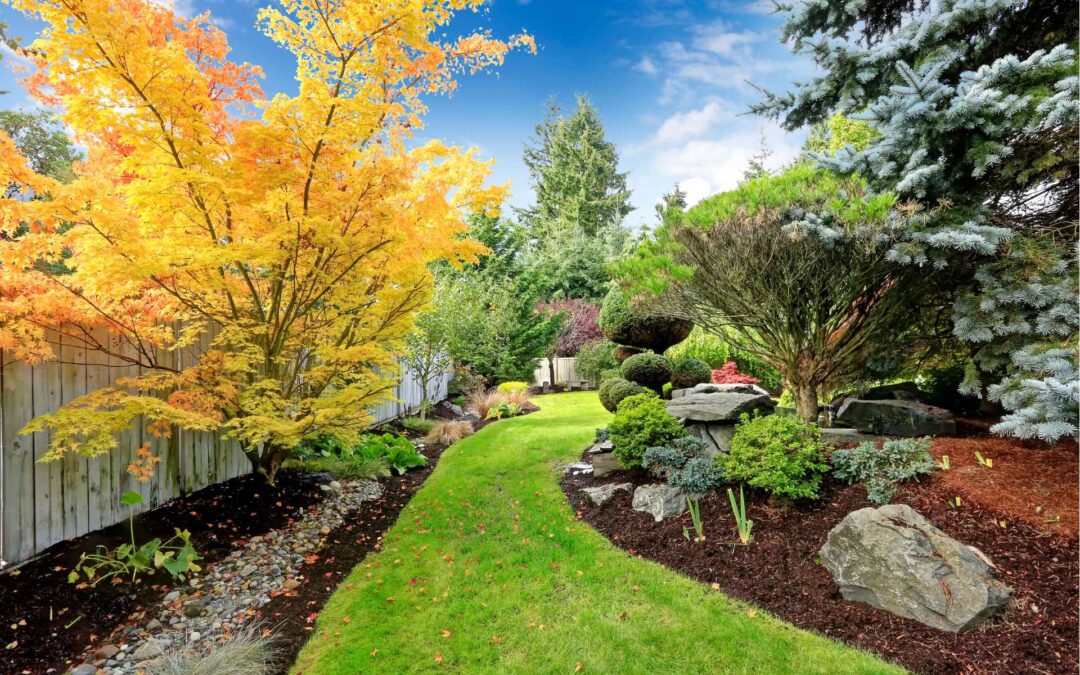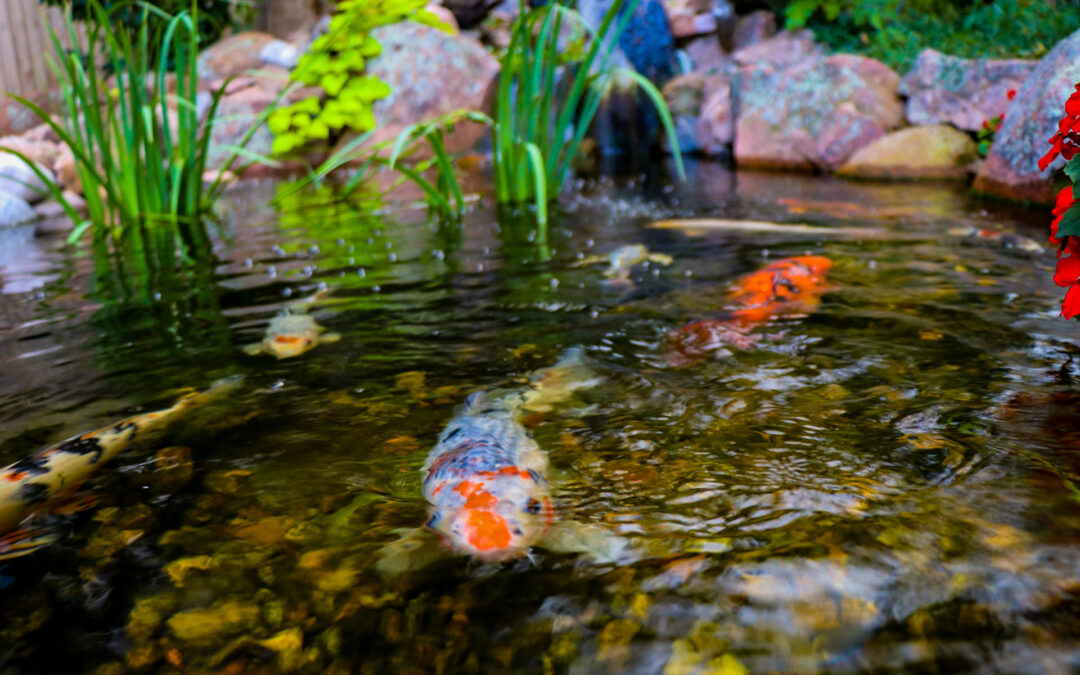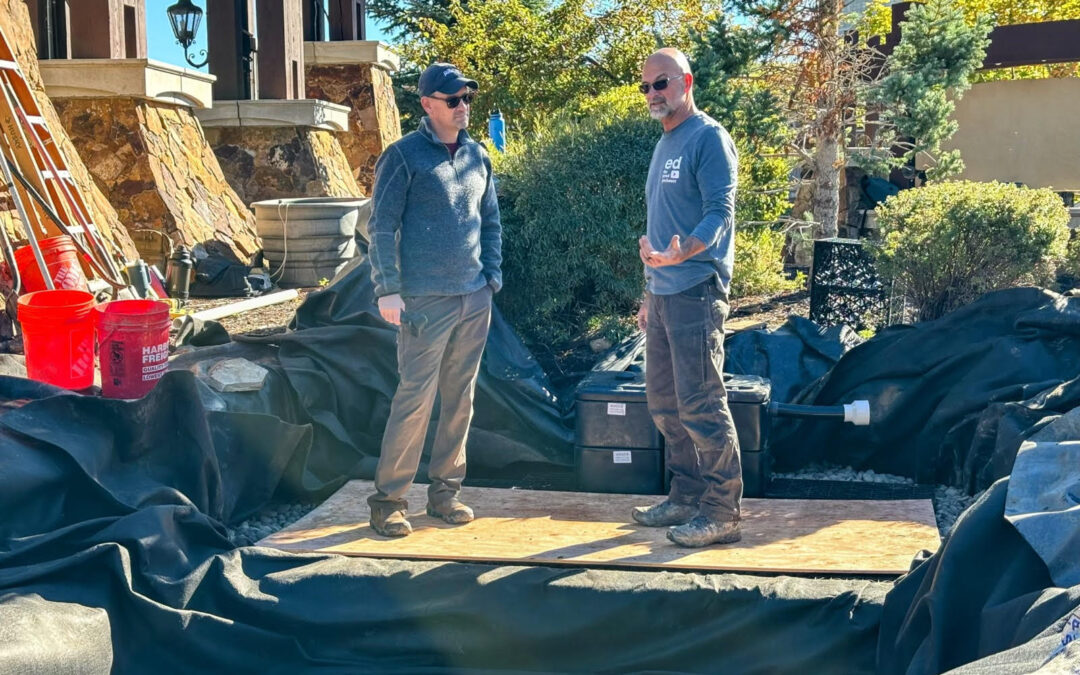Fish typically spawn when the water temperatures are between 65° and 70°. In Colorado, this usually occurs in late May or June.
How Can Your Backyard Pond Support Spawning Behavior?
Female koi don’t start reproducing until they are about 3 years old. At that point, take the following steps to support spawning.
- The pond should be free of chemicals! Remember that beneficial bacteria occur naturally and we do not consider them a chemical.
- Fish need plants because they have suitable material to lay eggs on. Plants, like floating hyacinths, provide excellent spawning ground with their many roots hanging down, offering the perfect spot to put eggs. Other plants like bulrush, common rush, corkscrew rush, and iris are just right as well!
- Algae will not stop the fish from spawning and are actually part of a healthy pond. Even green cloudy water will not hurt them.
- The fish need sun and shade. Lilies are perfect for this!
You may notice some fish looking fat. These are likely female fish that are getting ready to release eggs. Male fish have a more slender shape. The females tend to be wider just above the tail. Look at the white fish in the photo above: that one is female, so is the large yellow one and the dark orange one to the left of the white one.
Signs The Fish Are Spawning:
- The fish seem like they are fighting (but they’re not really!). The male bumps the female with his head urging her to spawn. They might seem to be chasing each other.
- Some fish are jumping clear out of the water.
*This can also be a sign of other issues. So, if they are doing this, pay attention to their behavior.
- After they have spawned, the water will seem like it has a slick surface and there will be a white foaminess at the edges of the pond. There will probably be foam in the skimmer, too. Potentially LOTS of foam. (Don’t worry it will go away!)
- The pond will smell…It will really smell and be FISHY! Don’t worry, the smell will pass!
- You may see eggs, but they are not always easy to see. They will look like little clear balls the size of a pinhead. They are often found on the tips of pond plants. Koi don’t put all the eggs in one basket—they’ll spread them all over the pond!
When Will They Hatch? Will I Have Thousands Of Fish??
The eggs that aren’t eaten as a tasty snack will hatch in about a week. They will be super tiny, no longer than the tip of your finger. They will hide really well, so you likely won’t see them. When they get a bit bigger you will see tiny fish darting around trying not to be eaten. These fish babies are called “fry.”
After fry hatch, they attach themselves to plants like reeds and even to the side of the pond. They consume suspended particle food or liquid food. The pond will naturally provide this for them through nutrients in the water.
Are you worried you might end up with too many fish? Don’t. The koi consider the eggs a nice snack and even making it past hatching is difficult, you will be lucky to get five new fish out of the deal. Having fish that were born in our own backyard pond is something that we love!
How Else Can Colorado Pond Pros Help?
Have more questions about your backyard pond, goldfish, or koi? We’d love to help! Contact us, your pond experts, for questions about your fish or if you’re interested in pond installation or landscaping. Additionally, our blog has great tips and advice on everything from protecting your fish from ducks to getting your fish and pond ready for fall.
